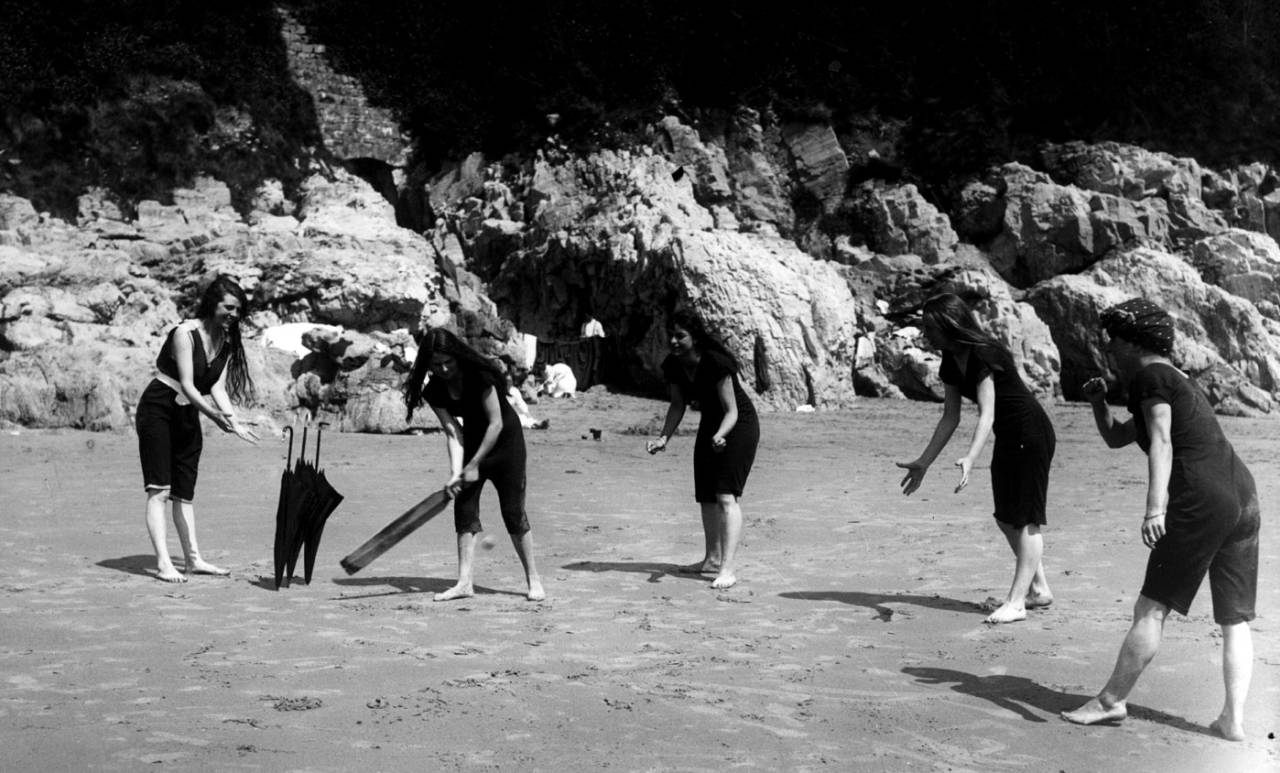Sticks and stones
And other objects that do the job of stumps at certain levels of cricket
Nishi Narayanan
15-Feb-2016

Chapman/Getty Images
Unlike football, cricket requires several implements (and a reasonably flat piece of ground) to play comfortably. But in informal games, you usually only get a ball and improvise the rest. Sometimes even the ball is an amalgamation of things vaguely mashed into a sphere. But the easiest set of objects to improvise is stumps.
In the photo above, from Swansea in 1910, the ladies use their umbrellas as a very sturdy set of stumps, which, at a pinch, could be used to cover the pitch if it rains.

Sam Panthaky/AFP
If there's no maidan, play in the bed of a dry lake, as these kids do in Sarkhej Roza, a 15th-century mosque-and-tomb complex outside Ahmedabad. Plenty of rocks around to use as stumps (and to sit on while disputes over who fetches the ball are sorted).

Saurabh Das/Associated Press
The advantage of using a steel bucket as stumps is that the batsman can't claim the ball didn't hit it. What was the loud clang then?

Gareth Fuller/PA Photos
Three twigs and you're set. In fact, bind them together and you've got yourself a bat - though it won't fetch you any sixes. But will those twigs withstand the incoming sea? And can you claim a dismissal if the water knocks one over? You thought the mankading debate was complex.

Getty Images
London, 1930: stumps and floodlight rolled into one.

PA Photos
Protesting miners find dual use for their picket sign, near Rotherham in Yorkshire, 1984.
What did/do you use for stumps? A pile of shoes? The schoolyard wall? Stack of coats? A chair? Your younger sibling?
Nishi Narayanan is an assistant editor at ESPNcricinfo